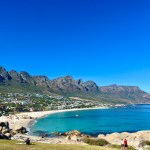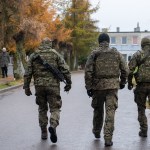Separately, a presidential advisor said Ukraine had halted an advance on the city of Mykolayiv after local authorities said Russian troops had entered. If captured, the city of 500,000 people in southern Ukraine, where Russian forces have made the most progress so far, would be the biggest yet to fall.
Officials said the fire at the Zaporizhzhia compound was in a training centre, not at the plant itself. An official at Energoatom, the state enterprise that runs Ukraine’s four nuclear plants, said there was no further fighting, the fire was out, radiation was normal and Russian forces were in control.
“Personnel are on their working places providing normal operation of the station,” the official told Reuters in a message.
He said his organisation no longer had communication with the plant’s managers, control over the radiation situation there or oversight of potentially dangerous nuclear material in its six reactors and about 150 containers of spent fuel.
Russia’s defence ministry also said the plant was working normally. It blamed the fire on a “monstrous attack” by Ukrainian saboteurs and said its forces were in control.
The head of the International Atomic Energy Agency, Rafael Grossi, said the plant was undamaged from what he believed was a Russian projectile. Only one reactor was working, at around 60% of capacity.
He described the situation as still tense, with the plant operating normally, adding: “There is nothing normal about this.”
A video from the plant verified by Reuters had earlier shown one building aflame, and a volley of incoming shells, before a large incandescent ball lit up the sky, exploding beside a car park and sending smoke billowing across the compound.
The prospect that fighting could cause a potential nuclear disaster had set world financial markets tumbling.MKTS/GLOB
Russia’s grip on a plant that provides more than a fifth of Ukraine’s electricity was a big development after eight days of war in which other Russian advances have been stalled by fierce resistance.
U.S. Energy Secretary Jennifer Granholm and other Western officials said there was no indication of elevated radiation levels.
“Europeans, please wake up. Tell your politicians – Russian troops are shooting at a nuclear power plant in Ukraine,” Ukrainian President Volodymyr Zelenskiy said in a video address. In another address, he called on Russians to protest.Read full story
Thousands of people are believed to have been killed or wounded and more than 1 million refugees have fled Ukraine since Feb. 24, when Russian President Vladimir Putin launched the biggest attack on a European state since World War Two.
Russian forces advancing from three directions have besieged Ukrainian cities, pounding them with artillery and air strikes. Moscow says its aim is to disarm its neighbour and capture leaders it calls neo-Nazis. Ukraine and its Western allies call that a baseless pretext for a war to conquer the country of 44 million people.
Russia had already captured the defunct Chernobyl plant north of Kyiv, which spewed radioactive waste over much of Europe when it melted down in 1986. The Zaporizhzhia plant is a different and safer type.
FIGHTING RAGES, SANCTIONS MOUNT
In Russia itself, where Putin’s main opponents have largely been jailed or driven into exile, the war has been accompanied by a further crackdown on dissent. Authorities have banned reports that refer to the “special military operation” as a “war” or “invasion”. Anti-war demonstrations have been squelched with thousands of arrests.
On Friday, the authorities shut down foreign broadcasters including the BBC, Voice of America and Deutsche Welle. Independent Russian broadcasters, TV Dozhd (Rain) and Ekho Moskvy radio, were shuttered on Thursday. The lower house of parliament introduced legislation on Friday to impose jail terms on people for spreading “fake” reports about the military. Read full story
Russia has been subjected to economic isolation never before visited on such a large economy, although a big exception has been carved out for its oil and gas exports. Ireland’s foreign minister, Simon Coveney, said more EU sanctions were coming.
“I suspect all Russian-flagged ships will be banned from entering EU ports. I also suspect that we’ll be banning other imports like steel, timber, aluminium and possibly coal as well,” Coveney told Irish national broadcaster RTE.
Only one Ukrainian city, the southern port of Kherson, has fallen to Russian forces since the invasion began on Feb. 24.
Local authorities in the shipbuilding city of Mykolayiv told residents not to panic and Zelenskiy’s military adviser, Oleksiy Arestovych, said the Russian advance there had been halted.
“We can feel cautious optimism about the future prospects of the enemy offensive – I think that it will be stopped in other areas also,” he said
Loud explosions could be heard in Kyiv on Friday morning and an air raid siren blared. The southeastern port city of Mariupol has been encircled and subjected to intense strikes, Britain said in an intelligence update.
In the northeast, along another major axis of the Russian attack, the cities of Kharkiv and Chernihiv have been under bombardment since the start of the invasion which worsened sharply this week, but defenders are holding out.
Kyiv, the capital of 3 million people, has been shelled but has so far been spared a major assault, with Russia’s main attack force stalled for days in a miles-long convoy on a highway to the north. In Washington, a U.S. defence official said Russians were still 25 km (16 miles) from Kyiv city centre.
On Thursday, Russia and Ukraine negotiators agreed at peace talks on the need for humanitarian corridors to help civilians escape and to deliver medicines and food to areas of fighting.
By Pavel Polityuk, Aleksandar Vasovic and John Irish.
(Reporting by Pavel Polityuk, Natalia Zinets, Aleksandar Vasovic in Ukraine, John Irish in Paris, Francois Murphy in Vienna, David Ljunggren in Ottawa and other Reuters bureaux; Writing by Peter Graff, Costas Pitas, Lincoln Feast; Editing by Stephen Coates, Simon Cameron-Moore and Timothy Heritage).





















 Become an Insider
Become an Insider
Comments - Please login in order to comment.